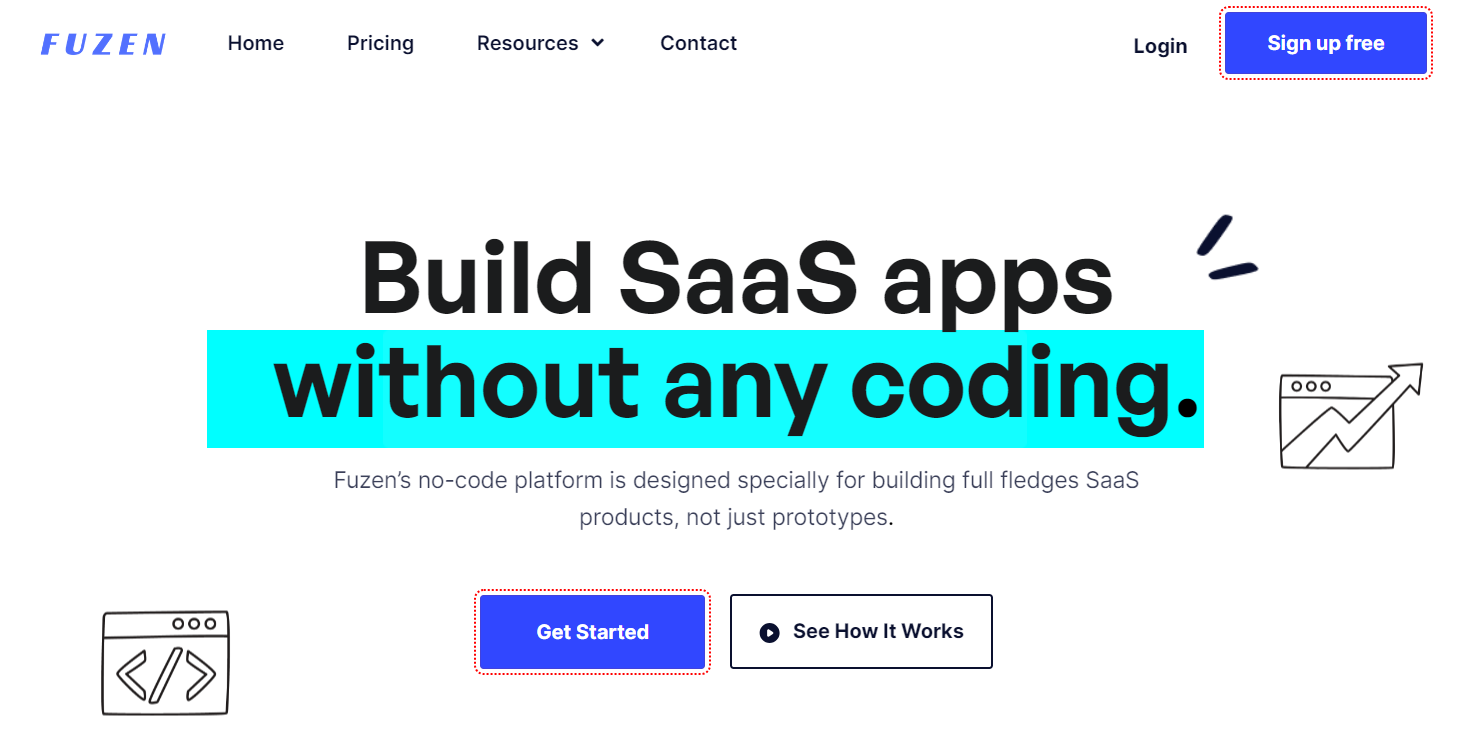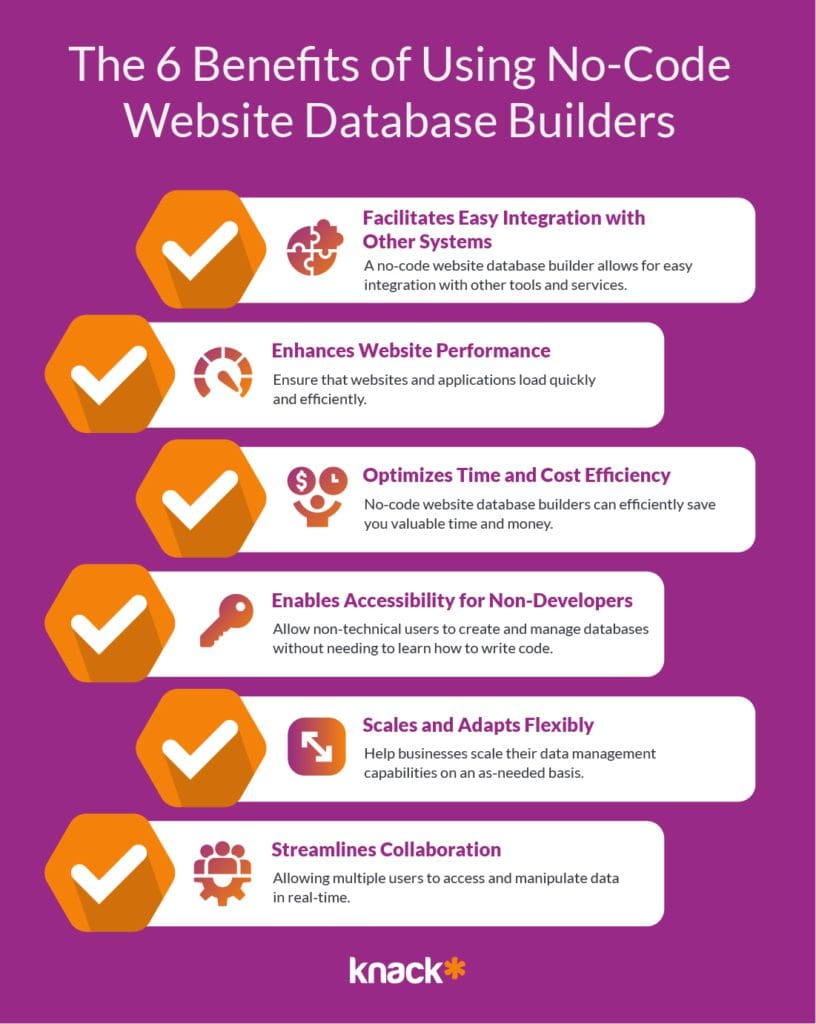Create Open Platform Databases Conveniently with the most effective No-Code Devices Available
Create Open Platform Databases Conveniently with the most effective No-Code Devices Available
Blog Article
A Comprehensive Guide to Executing Scalable Databases Without the Requirement for Coding Expertise
In the modern landscape of data management, the capacity to carry out scalable databases without coding proficiency is becoming increasingly important for companies of all dimensions. What are the important aspects that can truly encourage these customers to take advantage of scalable data sources successfully?
Recognizing Scalable Data Sources
In the world of contemporary information administration, scalable data sources have emerged as a vital remedy for organizations looking for to manage boosting volumes of details effectively. These databases are created to fit growth by enabling the smooth addition of resources, whether through horizontal scaling (including extra equipments) or upright scaling (upgrading existing equipments) This versatility is necessary in today's hectic electronic landscape, where data is produced at an unmatched price.
Scalable databases commonly utilize distributed styles, which allow information to be spread throughout multiple nodes. This circulation not only improves efficiency yet also supplies redundancy, making certain data accessibility even in case of equipment failings. Scalability can be a crucial element for different applications, consisting of e-commerce platforms, social media networks, and huge data analytics, where individual need can rise and fall considerably.
Moreover, scalable data sources often feature robust information uniformity versions that stabilize efficiency and integrity. Organizations should consider their certain requirements, such as read and write speeds, information honesty, and mistake tolerance when choosing a scalable database service. Eventually, comprehending the underlying principles of scalable databases is essential for businesses aiming to thrive in a progressively data-driven world.
Key Features to Look For
When assessing scalable data sources, a number of essential features are critical to ensuring ideal efficiency and reliability. Think about the design of the database. A distributed architecture can boost scalability by permitting data to be stored throughout several nodes, helping with smooth information gain access to and processing as need boosts.
Another crucial feature is information partitioning, which enables reliable administration of large datasets by separating them into smaller sized, a lot more convenient pieces (no-code). This approach not just improves efficiency but additionally simplifies source allotment
Additionally, try to find robust duplication capabilities. This function ensures information redundancy and high accessibility, reducing downtime throughout maintenance or unanticipated failures.
Efficiency surveillance tools are additionally vital, as they offer real-time insights right into system health and wellness and functional efficiency, permitting prompt modifications to keep optimal performance.

User-Friendly Database Devices
Simpleness is a critical component in the style of user-friendly data source devices, as it boosts access for individuals with varying degrees of technical knowledge. no-code. These devices prioritize intuitive user interfaces, enabling customers to produce, take care of, and inquiry databases without requiring extensive programs knowledge
Trick features commonly include drag-and-drop capability, visual data modeling, and pre-built themes that enhance the setup procedure. Such tools usually provide led tutorials or onboarding processes that help with individual engagement and minimize the discovering curve. Additionally, smooth assimilation with popular data resources and services ensures that individuals can easily import and export data, better simplifying procedures.

Additionally, durable support and neighborhood sources, such as discussion forums and paperwork, enhance the customer experience by supplying read support when required. Generally, user-friendly data source tools encourage organizations to harness the power of scalable data sources, making data management obtainable to everybody involved.
Step-by-Step Application Guide
How can organizations successfully execute scalable data sources to satisfy their growing information needs? The procedure begins with recognizing certain data why not try here needs, including the volume, range, and velocity of information that will be refined. Next, organizations need to evaluate straightforward database devices that provide scalability features, such as cloud-based options or handled database solutions.
Once the ideal tool is picked, the next action includes setting up the database setting. This includes establishing circumstances, defining individual permissions, and establishing information frameworks that line up with organization goals. Organizations needs to after that migrate existing information into the brand-new system, making certain information honesty and marginal interruption to procedures.
Post-migration, carrying out extensive screening is essential; this consists of efficiency testing under different lots problems to make sure the system can handle future development - no-code. Additionally, it is necessary to educate team on the data source monitoring user interface to promote smooth usage
Best Practices for Management
Effective management of scalable databases needs a calculated strategy that focuses on recurring surveillance and optimization. To attain this, organizations should implement robust tracking tools that offer real-time insights into database performance metrics, such as question feedback times, source application, and purchase throughput. Frequently examining these metrics can assist identify traffic jams and areas for enhancement.

Normal backups and catastrophe recuperation strategies are vital to guard data stability and accessibility. Developing a routine for checking these back-ups will make sure a reliable recovery procedure in instance of an this website unanticipated failure.
Furthermore, efficiency adjusting must be a continuous process. Readjusting indexing techniques, optimizing questions, and scaling resourcesâEUR" whether up and down or horizontallyâEUR" will certainly assist preserve ideal efficiency as use demands advance.
Finally, cultivating a culture of expertise sharing among group participants will make it possible for continuous understanding and adaptation, making certain that the management of scalable data sources remains effective and effective with time.
Conclusion
Finally, the execution of scalable databases can be efficiently attained without coding experience through the use of intuitive interfaces and easy to use devices. By adhering to the detailed strategies for configuration, information movement, and performance testing, people can navigate the complexities of data source administration easily. Highlighting ideal techniques for ongoing maintenance and partnership additional boosts the ability to handle scalable data sources effectively in a quickly advancing data-driven environment.
In the contemporary landscape of data management, the capability to carry out scalable data sources without coding knowledge is coming to be significantly essential for companies of all dimensions.In the world of modern-day information monitoring, scalable data sources have actually arised as a crucial solution for organizations seeking to deal with raising quantities of details efficiently.Furthermore, scalable databases commonly include durable information uniformity designs that stabilize efficiency and dependability.Just how can companies successfully apply scalable databases to fulfill their growing data needs? Next off, companies ought to assess easy to use data source devices that provide scalability features, such as cloud-based remedies or handled database solutions.
Report this page